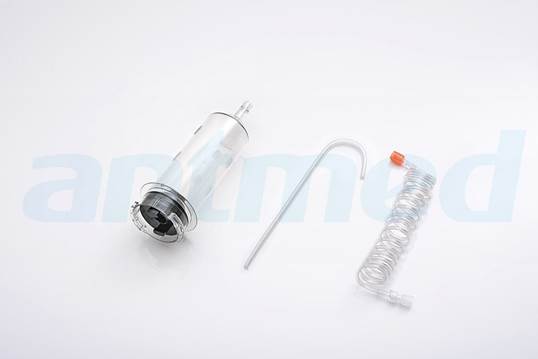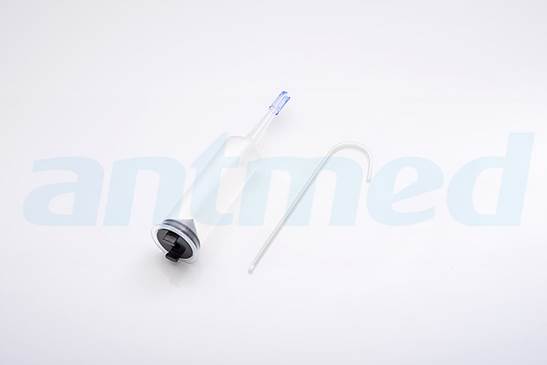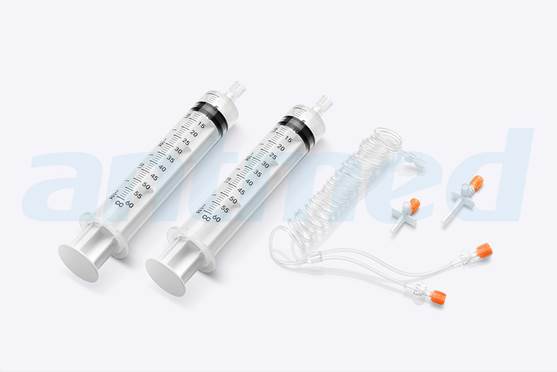In the field of medical imaging diagnosis, an error of 1 mm may determine life or death. As the "invisible heart" of precision examinations such as CT enhancement and angiography, the performance of the high-pressure syringes is directly related to image clarity and patient safety.
This article will unveil the technical veil of the high-pressure syringes - this is not only about equipment parameters, but also the ultimate pursuit of life precision.

Types of High-Pressure Syringes for Imaging
When it comes to high-pressure syringes, not every type suits every imaging modality. Here are the three most commonly used types, each tailored to a specific medical imaging procedure.
1. CT High-Pressure Syringes
CT imaging systems depend on iodine-based contrast agents because they generate precise cross-section images when used for body examinations. The design of CT high-pressure syringes supports quick injections under elevated pressures ranging between 300 and 400 psi according to medical requirements. The syringes maintain high operating pressures which results in quick contrast media distribution to deliver sharper diagnostic images.
Key Features:
High flow rate capability for rapid injection.
Engineered to withstand pressures up to 400 psi.
2. MRI High-Pressure Syringes
The diagnostic test Magnetic Resonance Imaging (MRI) utilizes gadolinium-based contrast agents in its operations. The infusion speed of MRI protocols affects pressure settings, which causes MRI syringes to differ in operation from CT syringes. MRI syringes must have two critical characteristics: non-magnetism for compatibility with magnetic field strength and to work with MRI scanners.
Key Features:
Slower injection speeds for precise administration.
Non-magnetic materials to prevent interference with MRI equipment.
Protocol-dependent pressure levels are often below those of CT syringes.
3. DSA High-Pressure Syringes
The specialized imaging procedure Digital Subtraction Angiography creates visual representations of blood vessels through its operation. DSA high-pressure syringes need the highest possible pressure settings reaching beyond 1200 psi for injecting iodine-based contrast media through veins and arteries. Fast delivery features within these designs help medical professionals view blood circulation through the procedure correctly.
Key Features:
Extremely high-pressure tolerance, often above 1200 psi.
Wider diameters to handle rapid injections.
Tailored for angiographic injectors and vascular imaging systems.

Key Differences Between CT, MRI, and DSA High-Pressure Syringes
While these syringes may seem interchangeable at first glance, their differences significantly impact their performance and compatibility in specific imaging modalities.
1. Pressure Capacity
The pressure tolerance is one of the most defining factors. CT syringes typically handle pressures between 300–400 psi, while DSA syringes can withstand pressures upwards of 1200 psi. MRI syringes fall somewhere in between but tend to operate with lower pressure due to slower infusion rates and different contrast agents.
2. Material Composition
The materials used differ extensively depending on the imaging procedure selected. MRI syringes employ non-magnetic components to ensure their safety for use within an MRI machine. Other syringes, like those for CT and DSA, often prioritize pressure resistance and durability in their material composition.
3. Injection Speed and Accuracy
CT procedures demand a rapid high-pressure injection to deliver contrast media effectively, whereas MRI often requires slower, more measured injections. DSA syringes are engineered for both speed and precision due to the intricate nature of vascular imaging.
4. Compatibility with Imaging Injectors
Not all syringes are compatible with all injector systems. Ensuring syringe compatibility with these systems is crucial to avoid procedural delays or errors.

Antmed’s High-Pressure Syringes for Imaging
Antmed stands out as a leading manufacturer of angiographic syringes designed for CT, MRI, and DSA imaging procedures. The precise and innovative production design of Antmed syringes delivers injector-brand compatibility with Bayer, Guerbet, and Bracco systems, along with full compliance with pressure and safety standards. Made with high-quality, single-use materials, we prioritize patient safety and imaging accuracy. With Antmed, healthcare professionals can rely on durable, sterile, and efficient syringe solutions tailored to their specific needs.
Conclusion
The innovation of high-pressure syringes has never been confined to the numbers on a specification sheet. The key to clinical decision-making lies in understanding the logic behind precision—it is not only about absolute control over flow curves but also about millisecond-level risk warnings and a profound respect for the uniqueness of each life.
Syringes designed specifically for medical procedures by Antmed provide healthcare professionals with high-performing instruments that boost imaging accuracy and care quality while delivering reliable operation during demanding situations.


 Продукты для медицинской визуализации
Продукты для медицинской визуализации Анестезия Интенсивное лечение
Анестезия Интенсивное лечение Сердечно-сосудистые и периферические продукты
Сердечно-сосудистые и периферические продукты
